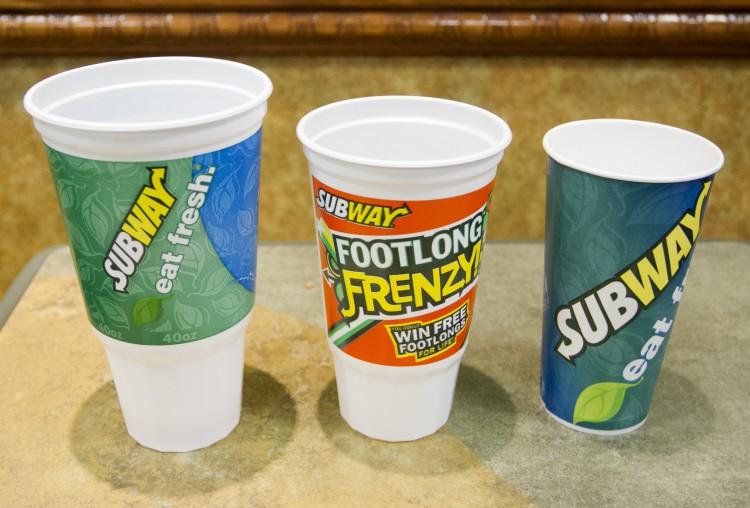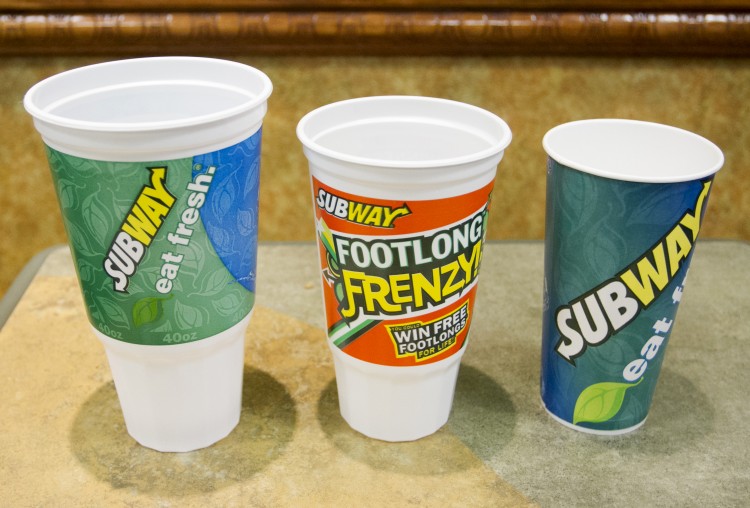The large sugary drink ban, or “soda ban,” backed by Mayor Michael Bloomberg, fizzled out before it even got started.
Judge Strikes Down Large Sugary Drink Ban in NYC
The large sugary drink ban, backed by Mayor Michael Bloomberg, fizzled out before it even got started.

A line of drink cups ranging from 7 ounces to 64 ounces with their corresponding sugar content, at a briefing at City Hall when the proposed ban was first announced in May 2012. Christian Watjen/The Epoch Times

Kristen Meriwether
Journalist
|Updated:





